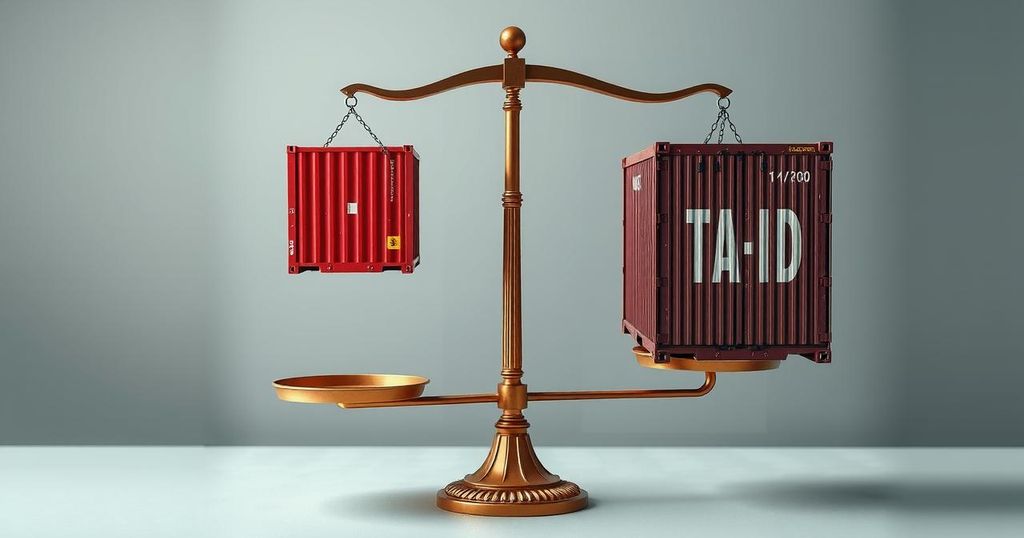Trump Addresses Congress: Issues Warning on India’s Tariffs and Reciprocal Trade Measures

In his address to Congress, President Donald Trump condemned India’s high tariffs, particularly on U.S. automobiles, and announced the implementation of reciprocal tariffs starting April 2, 2025. This move aims to create fair trade practices but threatens to impact U.S.-India trade relations. Economic experts warn of potential declines in India’s GDP growth due to escalating tariffs. Both nations face the challenge of navigating these significant changes amidst growing trade tensions.
In an impactful address to Congress, U.S. President Donald Trump emphasized his administration’s dedication to enforcing reciprocal tariffs against foreign imports, particularly targeting India, China, and the European Union. He criticized long-standing high tariffs imposed on American goods, notably automobiles, declaring that the system is inherently unfair to the United States.
Trump articulated his intention to adopt a strategic response to perceived trade injustices, asserting, “Other countries have used tariffs against us for decades, and now it’s our turn to start using them against those other countries.” He mentioned India’s exorbitant tariff rate of 100 percent on U.S. automobiles, highlighting it as a significant example of unfair trade practices.
The President announced that reciprocal tariffs would be implemented starting on April 2, 2025, intending to create a more equitable export landscape for American producers. Trump noted, “Whatever they tariff us, we will tariff them. Whatever they tax us, we will tax them.” These tariffs could potentially impact India’s trade relations with the United States, which have strengthened over the past decade.
Economic analysts predict that the impending tariffs could disproportionately affect India due to its historically high tariff barriers across various sectors, including agriculture and technology. A recent report by Goldman Sachs indicated that such measures might not only target specific products but could also exacerbate trade flows amid increasing barriers and compliance challenges.
India’s trade surplus with the U.S. could be at risk, having doubled over the last decade to $35 billion, accounting for nearly 1 percent of India’s GDP in fiscal year 2024. As U.S. tariffs increase, India’s GDP growth may experience a slight decline, estimated between 0.1 and 0.3 percentage points, contingent on the nature of tariff reciprocity and U.S. demand.
The situation may escalate if Trump opts to impose broader global tariffs, heightening India’s exposure to U.S. demand and potentially impacting domestic economic growth more significantly. As the implementation date approaches, the global trade community watches with anticipation for how Trump’s measures may affect international markets and U.S.-India relations.
India faces the challenge of safeguarding its domestic industries while managing the risks of engaging in a full-scale trade conflict with the leading global economy. The stakes remain high as both nations navigate these critical negotiations and policy shifts.
President Trump’s address highlights his administration’s push for reciprocal tariffs against countries like India that impose high trade barriers. The announcement raises concerns regarding potential disruptions in U.S.-India trade relations, already marked by significant tariffs, particularly on automobiles. As reciprocal tariffs are set to take effect, the ramifications for both economies hinge on the balance between protecting domestic industries and maintaining cooperative trade relations. Experts predict measurable impacts on India’s GDP growth as these tariffs unfold.
Original Source: indianexpress.com








